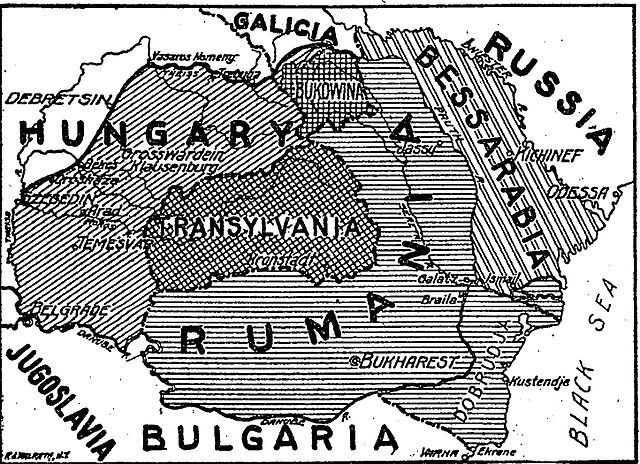The Great Retreat was a strategic withdrawal and evacuation on the Eastern Front of World War I in 1915. The Imperial Russian Army gave up the salient in Galicia and the Polish Congress Kingdom. The Russian Empire's critically under-equipped military suffered great losses in the Central Powers' July–September summer offensive operations, which led to the Stavka ordering a withdrawal to shorten the front lines and avoid the potential encirclement of large Russian forces in the salient. While the withdrawal itself was relatively well-conducted, it was a severe blow to Russian morale.
Russian withdrawal in 1915.
German cavalry entering Warsaw on August 5, 1915.
Poniatowski Bridge in Warsaw after being blown up by the retreating Russian Army in 1915.
Peasants from a destroyed village in front of a shack constructed from debris, environs of Warsaw, 1915
Eastern Front (World War I)
The Eastern Front or Eastern Theater of World War I was a theater of operations that encompassed at its greatest extent the entire frontier between Russia and Romania on one side and Austria-Hungary, Bulgaria, the Ottoman Empire, and Germany on the other. It ranged from the Baltic Sea in the north to the Black Sea in the south, involved most of Eastern Europe, and stretched deep into Central Europe. The term contrasts with the Western Front, which was being fought in Belgium and France.
Clockwise from top left: soldiers stationed in the Carpathian Mountains, 1915; German soldiers in Kiev, March 1918; the Russian ship Slava, October 1917; Russian infantry, 1914; Romanian infantry
A timeline of events on the Eastern and Middle-Eastern theatres of World War I
Border changes in favor of Romania as stipulated in the Treaty of Bucharest
World War I caricature from Russia depicting Wilhelm II, Franz Joseph I and Mehmed V. Top: "If only we could get to the top – it would be ours!" Bottom: "Let me help you with that!"








